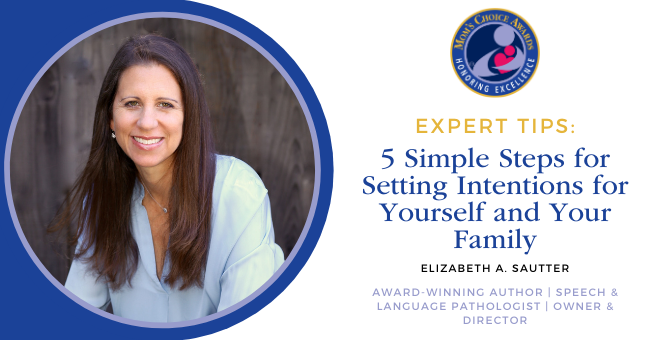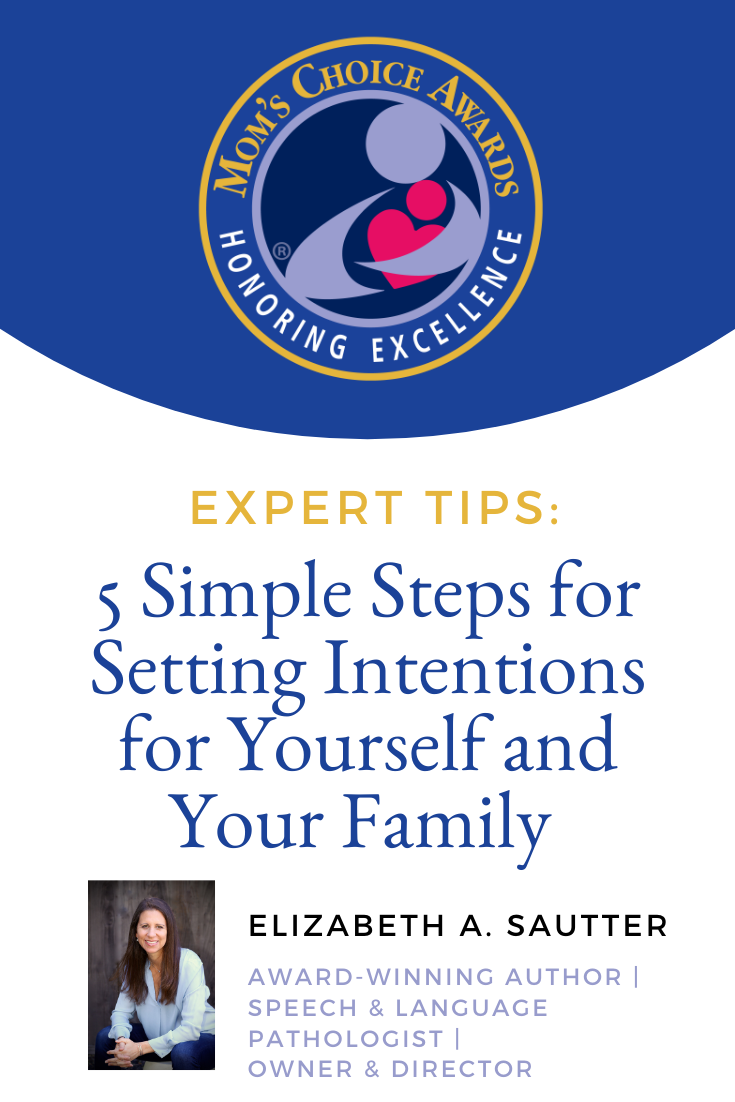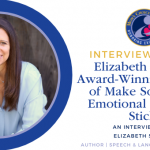 Elizabeth Sautter
Elizabeth Sautter
Author | Speech and Language Pathologist
Facebook | Twitter
 As we approach the new year, you’re likely being bombarded with reminders or some internal pressure to make resolutions about all the changes that you should be making in the new year. First and foremost, let’s talk about the word “should”. Although I believe in making goals and thinking about the future, they can often be a letdown and cause a feeling of guilt or shame, especially when we use the word “should” along with them. They can come from a lack of self-acceptance rather than encouragement and excitement. It’s a feeling of “have to” vs. “get to” which can feel burdensome. And if we set goals without a plan, they can feel overwhelming and don’t last or “stick” and we can often feel let down and discouraged.
As we approach the new year, you’re likely being bombarded with reminders or some internal pressure to make resolutions about all the changes that you should be making in the new year. First and foremost, let’s talk about the word “should”. Although I believe in making goals and thinking about the future, they can often be a letdown and cause a feeling of guilt or shame, especially when we use the word “should” along with them. They can come from a lack of self-acceptance rather than encouragement and excitement. It’s a feeling of “have to” vs. “get to” which can feel burdensome. And if we set goals without a plan, they can feel overwhelming and don’t last or “stick” and we can often feel let down and discouraged.
Goals and resolutions are things like losing 10 pounds or running a marathon. They usually have an end to them or something you check off and finish. And if we fail or stop focusing on the resolution, we might toss out the goal. A goal is focused on the future with a specific outcome and external achievements. An intention relates to a purpose and relationship to yourself and others. Intentions are based on the present moment which can help determine how we want to show up for ourselves and for others.
Parenting is not something you check off “the list.” It is ongoing. It’s a relationship and your children are their own little people (or in my case, big people). They have their own ideas, thoughts, and desires. Setting goals with parenting is tricky and can set you up for failure or feeling “not good enough”. But setting intentions helps us determine how we want to show up. We can come back to them day after day, or even hour after hour, to remind ourselves how we want to “be” with the people we support and love so much.
Instead of setting a resolution, how about trying something similar, but a little different with me this year? How about we talk about setting intentions and focusing on what we want to cultivate and what we want to let go of?
Even if your intention for 2021 is simply to have a better year than 2020, setting intentions rather than resolutions allows you and your family to approach everything that comes up through the lens of your values and purpose rather than feeling let down or reacting to unmet goals.
But how do you begin to set intentions?
Let’s start by breaking this down into 5 simple steps:
1. Reflect:
Start by reviewing the year or past bit of time. Journal, go for a walk, or meditate, and take some time to reflect. Close your eyes and mindfully reflect on past events and experiences. You can do this alone and/or with your family. Talk with yourself and your family and think about what went well and what felt good. What feelings were attached to those experiences? Joy? Excitement? Pride? Do you want more of those feelings? And what might have felt uncomfortable? What feelings come up? Uncertainty? Overwhelm? Disconnection? Do you want less of that? Don’t judge – just notice and observe. Share with each other or keep to yourself, whichever feels right.
2. Cultivate:
Once you are clear on what you want more of, hone in on the feelings, actions, experiences, and words that relate and describe them. Write down the words that come up and resonate with you. The patterns and feelings that came up for me were connection, collaboration, fun, play, joy, and ease.
3. Let go:
After thinking about some of the hard times or things you want less of, write down those feelings and reactions. Mine were confusion, overwhelm, and frustration.
4. Anchor:
Once you are clear with what you want to cultivate and let go of, try to anchor those intentions with a few words that you can reflect on and refer to daily. For me, those are CLARITY, JOY & EASE.
5. Say YES!:
Now that you have your intentions with anchor words, tune into these on a daily basis with a visual reminder or ritual. When things come up that cause you to pause before deciding whether if you should partake or get involved, ask yourself, “Do these bring more X, Y, or Z?” (your anchor words). For me, I will ask if it brings more joy, ease, or clarity. If so, then I will try to fit it in and make the space to say “yes”. If not, we can try to set boundaries for less of what is being asked. In general, try to focus and find more things, people, and experiences that support your intentions. I already know that some of the things that bring me more joy, ease, and clarity are journaling, walks in nature, dancing in the kitchen, and snuggles. These are a daily YES!
All of these steps can be done by yourself, with one child at a time, or as a family. Get your free download below to help you map out these steps and write them out. Your words can be placed in a prominent place as a reminder (e.g. the refrigerator or on a bathroom mirror); or if you prefer, you can place your word in a private place just for you (e.g. a private notebook). Making a vision board can also be a fun and helpful way to bring your words and intentions to life and can be done as a family or with friends. Focusing on bringing intentions into your daily life will bring more overall mindfulness and happiness for you and your family.
Remember, though, this takes time and it’s a process, just like everything else in life.
 About Elizabeth A. Sautter
About Elizabeth A. Sautter
Elizabeth A. Sautter, MA, CCC- is a licensed speech and language pathologist and co-director and co-owner of Communication Works (CW), a private practice providing speech, language, and social therapy in the San Francisco Bay Area. She has worked with preschool to adult clients and their families since 1996 in private practice, schools, and hospitals.
Elizabeth began her career working at a school with severely impaired children with behavioral challenges. In this school, she spent eight years as part of a collaborative team whose members worked to increase functional communication with the goal of decreasing undesired behavior.
After having her own children, Elizabeth followed her professional passion for supporting those with social, self-regulation, and executive functioning (i.e. social regulation) challenges and started CW as a private center providing individual and group therapy. Following the needs of the clients and community, she began to provide parent training, school consultation, summer camps, and social hangouts in order to support the whole child, family, and community. CW is also a non-public agency (NPA) providing services to public and private schools. The CW center is now run by Seven Bridges Therapy, where Elizabeth is a consultant. CW continues to provide school-based speech, language, and social support.
To see more, view all posts by Elizabeth Sautter or view her website here makesociallearningstick.com.


 </div
</div


